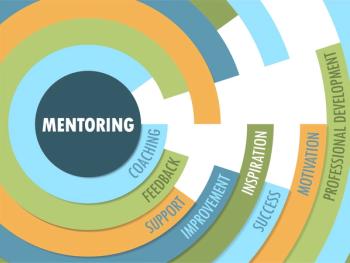
- Psychiatric Times Vol 29 No 12
- Volume 29
- Issue 12
Networking, Professionalism, and the Internet
In psychiatry, professional challenges are heightened by the importance of the psychiatrist-patient relationship.
The digital revolution has transformed society and forever altered the practice of psychiatry. Technology permeates our daily lives and poses new social and professional challenges (Table 1).1 The speed, range, and permanence of digital communication magnify both its efficiency and the effects of breeches in professionalism. Few standards exist regarding the use of technology in medicine, and those that do exist can become quickly outdated as technology advances and patient expectations and standard-of-care practices continue to change.
In psychiatry, professional challenges are heightened by the importance of the psychiatrist-patient relationship. Because of its intimacy, the sensitivity of clinical content, and stigma about mental illness, the psychiatrist-patient relationship must be one of safety and trust. However, psychiatric patients deserve the same access to medical information and up-to-date clinical care practices that all medical patients merit and that technology may enhance. How can psychiatrists integrate technology professionally into clinical practice?
Table 1
Important facts about use and misuse of digital technology
This article addresses key concerns that can arise with the use of technology. It then looks at promising technological opportunities that can be integrated into psychiatric practice while respecting professional boundaries. Finally, recommendations for use of technology in psychiatric practice are discussed.
Clinical care and liability
While technology offers opportunities for improving care, its use in clinical practice has potential pitfalls. Electronic communication largely lacks nonverbal cues such as affect and is easily misinterpreted. Visual and other diagnostic data are lacking. In the rapid back and forth of an electronic exchange, the physician may miss important information; a patient may be having a problem for which he or she needs to be seen.2 For example, a patient with bipolar disorder who takes lithium e-mails her psychiatrist because she is not feeling well-she attributes her symptoms to exercising in hot weather. Unless the psychiatrist recognizes the possibility of dehydration and resulting lithium toxicity and insists that the patient be evaluated in person, the patient may suffer harm, such as a fall and fracture due to ataxia, thus exposing the psychiatrist to liability.
If someone who is not a current patient contacts a psychiatrist seeking medical advice, the psychiatrist must avoid inadvertently establishing a physician-patient relationship by providing advice with the patient’s implied consent.3 Patients have the right to know the source of medical information; anyone who provides medical information online should identify himself or herself and provide appropriate credentials.
Psychiatrists who post information online using a pseudonym should never assume anonymity. One example is the case of a Boston pediatrician, a defendant in malpractice litigation who was blogging under the pseudonym “The Flea” about a case. When his identity was revealed by the plaintiff’s attorney, the case was quickly settled.4
Finally, the psychiatrist who provides medical advice to patients online may be providing care across state lines if the patient is not physically within the psychiatrist’s state; such situations occur when an adult patient has moved but wishes to continue treatment or when an adolescent has graduated high school and attends college away from home. If the care largely takes place electronically, the psychiatrist should ascertain the other state’s medical board requirements.5
Doctor-patient relationship and boundaries
Traditionally, psychiatry has insisted on the maintenance of a therapeutic frame for effective treatment. All psychiatric treatment-particularly psychotherapy-requires clear boundaries for patients to feel safe. By restricting treatment to time-limited, face-to-face encounters, patients receive the important message that the relationship is professional. When working through a patient’s deeply personal thoughts and feelings, revealed verbally and nonverbally (eg, through affect and gesture), face-to-face sessions are key to successful treatment. Technology does not allow these types of physician-patient encounters and it can blur the boundary between personal and professional.
Because of easy access to the Internet, patients and psychiatrists can obtain personal information about each other. Communication can occur 24/7, and while the participants are invisible to each other, they may be communicating in their nightclothes. The disclosure of intimate feelings and thoughts in such a context invites boundary erosion, and the communication may become an unhealthy vehicle for meeting emotional needs of both psychiatrist and patient. Conversely, the impersonality of text on a screen may increase opportunities for countertransference. Psychiatrists need to remember that it is their job, not the patient’s, to maintain the therapeutic frame. Avoid “friending” patients and other electronic interactions that blur professional boundaries.6
Confidentiality
Electronic communication is not confidential: it is viewed by others (eg, hospital IT staff, the company that owns the software); remains accessible on servers (despite the terminology “in the clouds”); and is subject to copying and pasting, forwarding, hacking, leaking, human error, and professionalism lapses. HIPAA prohibits the release of patient information without the patient’s written consent.7 Thus, detailed information about patients should never be posted online.2
Conflict of interest
Psychiatrists often play multiple roles; they can be clinicians, researchers, published authors, advocates, teachers, board members, or investors. These roles can easily come into actual or potential conflict, and when they do, such conflicts need to be explicitly disclosed. Endorsing a book on Amazon.com to which one has contributed a chapter, soliciting online donations for a patient advocacy organization without identifying oneself as a member of the agency’s board, or blogging a treatment recommendation when one owns shares in the company that produces the treatment all represent conflicts that need to be revealed.2
Mandated reporting
Although state laws vary, psychiatrists are often legally mandated to report potential harm to patients and vulnerable populations, such as children and the elderly. The availability of patient information through online searches and social media opens the door for greater knowledge of threats to patient safety. However, where the responsibility to report begins and ends is unclear. For example, a child psychiatrist who looks up a teenager’s Facebook page outside of a session and discovers alarming content about potential statutory rape or parental abuse is left with the dilemma of whether to contact child protective services.
In general, unless the situation is an emergency, the psychiatrist would do well to discuss the discovered content with the patient to verify the content. He also needs to discuss the clinical decision to look at the site, because such an act may be perceived as voyeurism.
Privacy
The personal information of psychiatrists and patients, from sexual orientation to political affiliation to real estate assets, can be easily found online.8 Psychiatrists should expect to be Googled by patients and need to be prepared to respond when patients have questions about information found online. It is critical to avoid posting any personal information online that you would not want a patient to see.
Whether psychiatrists should Google their patients is a complicated question. In general, psychiatrists should only conduct online searches about patients when, after careful thought, they feel they are driven by the need to help the patient (as opposed to curiosity or voyeurism) and are clear about necessary consent and what they will do with the information once they have it.9
Libel
False written comments about a person that are stated as fact and lead to harm for that person constitute libel. The definition does not preclude online communication.10 Thus, psychiatrists should avoid making derogatory comments about others online. Online physician rating sites as well as sites such as Yelp and Angie’s List offer patients the opportunity to provide online reviews, and disgruntled or unwell patients may post comments that psychiatrists feel are inaccurate. If the psychiatrist feels the content is truly harmful, he should obtain legal advice.
“Netiquette”
Electronic communication can be unprofessional not only by virtue of its content but also by virtue of its form. Tone, word choice, and punctuation should be professional. For example, notice the difference between “MEETING TODAY AT 2 PM. BE THERE OR ELSE!!!” and “Reminder: Meeting today, conference room. Important agenda attached.” Although the content of the messages is the same, the threatening tone and inappropriate use of all capitals and exclamation marks makes the first message unprofessional.
Using electronic media to vent is never appropriate. When affectively “stirred up,” psychiatrists should pause before sending a message-sensitive conversations should almost always take place in person. Finally, electronic messages are easily disseminated. Before adding a “bcc” or hitting “Reply to all” in an e-mail, or “retweeting” to multiple recipients, think twice and respect the boundaries of confidentiality and professionalism.11
Using technology
The professional use of technology offers important opportunities for psychiatrists and patients. Which technologies to use and how they are used depends largely on the size of the practice and the manpower available. Online therapies can significantly improve access to care for hard-to-reach patients, such as adolescents or patients living in communities with few psychiatric resources. Interactive, computer-based programs, such as “Coping Cat” for treating anxiety in children or the online CATCH-IT program for preventing depression, may improve care.12,13
Technology provides an inexpensive means for rapidly disseminating important information to patients. Blogs and Web sites that provide accurate, up-to-date information for patients can provide important alternatives to the wealth of inaccurate content available online. Information directed toward groups of patients may be appropriate for social media. For example, using social media for advisories about a new FDA black box warning, the need for patients taking neuroleptics to use sun protection, or depot injection dates for a cohort of VA patients seem feasible and appropriate.
Technology can also enhance the logistics of running a practice. Findings from a recent study indicate that texting patients’ appointment reminders reduces the no-show rate.14 Protected portals for patients to e-mail medication refill requests or ask clinical questions of their psychiatrist can be efficient and helpful as well.
Some psychiatric treatments may improve with “bridging”-the use of patient networking sites for persons with chronic illness. Such patients may benefit from the support and resources these sites provide. Similar electronic “bridges” between psychiatrist and patient may be useful between sessions. Yager15 reports on improvement in the therapeutic alliance when e-mail was used to correspond with patients who had eating disorders. In working with children who have developmental disorders and their families, for which teams of multiple professionals are the norm, e-mail can significantly improve team communication.
Finally, online technology provides a means for professionals to network. While Facebook and YouTube are used by physicians for this purpose, professional social networking sites such as LinkedIn or Doximity (for physicians only) may be more appropriate for this purpose.
Table 2
A physician's guide to using specific types of technology
Recommendations for practice
In general, psychiatrists need to appreciate that technology is here to stay and represents a critical change to the framework of practicing psychiatry. By spurning technology, psychiatrists may risk failing to understand its importance in the lives of patients as well as its inevitable role in clinical practice. By embracing technology without caution, they risk violating professional roles and boundaries. By keeping in mind some caveats, psychiatrists can successfully employ technology in their practice:
• Be ever-vigilant about the impact of technology on the physician-patient relationship
• If you are using a specific technology, use it competently (Table 2); be wary about being unable to keep up with incoming information
• Know current professional guidelines and standards of practice regarding technology, including your institution’s policies (see Additional Resources box); violations can result in loss of licensure, job, and professional status16
• When you are in doubt about certain aspects of technology, ask an expert (eg, IT, risk management, legal, clinical, ethical)
References:
References
1. Bodnar K. The ultimate glossary: 120 social media marketing terms explained. 2011. http://blog.hubspot.com/blog/tabid/6307/bid/6126/The-Ultimate-Glossary-120-Social-Media-Marketing-Terms-Explained.aspx. Accessed October 14, 2012.
2. DeJong S, Benjamin S, Anzia J, et al. AADPRT Curriculum on Professionalism and the Internet in Psychiatry. 2011. http://aadprt.org/vtodocs/professionalism_and_the_internet/AADPRT_Professionalism_and_the_Internet_Curriculum.pdf. Accessed October 30, 2012.
3. Recupero PR. E-mail and the psychiatrist-patient relationship. J Am Acad Psychiatry Law. 2005;33:465-475.
4. Cooney E. White Coat Notes: Flea’s fall sobering for other bloggers. May 31, 2007. http://www.boston.com/yourlife/health/blog/2007/05/fleas_fall_sobe.html. Accessed October 24, 2012.
5. Professional Risk Management Services, Inc. Risks Associated With Specific Internet Activities: A Guide for Psychiatrists. 2010.
6. Gabbard GO. Professionalism and boundaries in cyberspace. In: Gabbard GO, Roberts LW, Crisp-Han H, et al, eds. Professionalism in Psychiatry. Washington, DC: American Psychiatric Publishing; 2012:59-73.
7. US Department of Health and Human Services. Health Insurance Portability and Accountability Act of 1996 (HIPAA) Privacy and Security Rules. http://www.hhs.gov/ocr/privacy. Accessed October 24, 2012.
8. Mostaghimi A, Crotty BH, Landono BE. The availability and nature of physician information on the internet. J Gen Intern Med. 2010;25:1152-1156.
9. Clinton BK, Silverman BC, Brendel DH. Patient-targeted googling: the ethics of searching online for patient information [published correction appears in Harv Rev Psychiatry. 2010;18:206]. Harv Rev Psychiatry. 2010;18:103-112.
10. Veeder VV. The history and theory of the law of defamation. Columbia Law Review. 1903. http://www.jstor.org/stable/1109121. Accessed October 24, 2012.
11. Chan JF. E-mail-A Write It Well Guide: How to Write and Manage E-Mail in the Workplace. Oakland, CA: Write It Well; 2008.
12. Kendall PC, Hedtke KA. Coping Cat Workbook. 2nd ed. 2006. http://www.workbookpublishing.com/coping-cat-workbook-2nd-edition-ages-7-13.html. Accessed October 24, 2012.
13. Iloabachie E, Wells C, Goodwin B, et al. Adolescent and parent experiences with a primary care/Internet-based depression prevention intervention (CATCH-IT). Gen Hosp Psychiatry. 2011;33:543-555.
14. Sims H, Sanghara H, Hayes D, et al. Text message reminders of appointments: a pilot intervention at four community mental health clinics in London. Psychiatr Serv. 2012;63:161-168.
15. Yager J. E-mail as a therapeutic adjunct in the outpatient treatment of anorexia nervosa: illustrative case material and discussion of the issues. Int J Eat Disord. 2001;29:125-138.
16. Greysen SR, Chretien KC, Kind T, et al. Physician violations of online professionalism and disciplinary actions: a national survey of state medical boards. JAMA. 2012;307:1141-1142.
17. Lagu T, Kaufman EJ, Asch DA, Armstrong K. Content of weblogs written by health professionals. J Gen Intern Med. 2008;23:1642-1646.
18. Chretien KC, Azar J, Kind T. Physicians on Twitter. JAMA. 2011;305:566-568.
19. Purcell K. Search and email still top the list of most popular online activities. 2011. http://www.pewinternet.org/Reports/2011/Search-and-email.aspx. Accessed October 24, 2012.
20. Modahl M, Tompsett L, Moorhead T. Doctors, patients, and social media. 2011. http://quantiamd.com/player/xsgsfqqy?cid=53. Accessed October 30, 2012.
21. Bosslet GT, Torke AM, Hickman SE, et al. The patient-doctor relationship and online social networks: results of a national survey. J Gen Intern Med. 2011;26:1168-1174.
Articles in this issue
almost 13 years ago
Glutamate and Psychiatry in 2012-Up, Up and Away!almost 13 years ago
New Drug Developments for Bipolar Maniaalmost 13 years ago
Deep Brain Stimulation: New Promise in Alzheimer Disease and Depression?almost 13 years ago
Takotsubo Cardiomyopathyalmost 13 years ago
Intimate Portrait: Marsha D. Rosenberg, MDalmost 13 years ago
Penis Size: A Consideration of Fantasy and Reality (With Only a Few Puns)almost 13 years ago
Introduction: Navigating the Waters of Digital Technologyalmost 13 years ago
Computers in the Consulting Roomalmost 13 years ago
New Risks to Confidentiality in the Modern EraNewsletter
Receive trusted psychiatric news, expert analysis, and clinical insights — subscribe today to support your practice and your patients.















